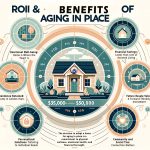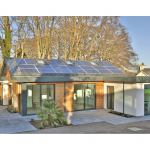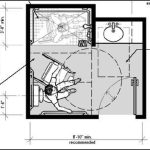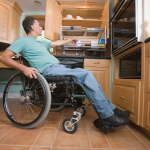As people age, they often want to continue living independently for as long as possible.
Independent living at home is possible with home modifications designed for seniors. As people age, it’s natural to want to continue living independently for as long as possible. The good news is, with the right home modifications for independent living, seniors can safely and comfortably stay in their own homes while enjoying a higher quality of life.
At Live in Place Designs, we specialize in creating custom home modification plans that are tailored to the unique needs of each individual. Our aging in place design solutions allow seniors to continue living independently in their own homes, rather than moving to a nursing home or independent living community.
What are Home Modifications for Independent Living?
Home modifications for independent living are changes made to a living space to make it more accessible and easier to navigate for individuals with mobility limitations, disabilities, or other health issues. These modifications can range from simple improvements like installing grab bars to more extensive renovations like bathroom modifications and widening doorways.
The goal of home modifications is to create a safe and comfortable living environment that promotes independent living and enhances the quality of life for seniors. With the right modifications in place, seniors can continue to live at home and enjoy the familiarity and comfort of their own surroundings.

What is Universal Design?
- No-step entries to the home: This design feature makes it easy for seniors with mobility issues to enter their home without having to navigate stairs or other obstacles. It also benefits individuals with strollers or those who use walkers or wheelchairs.
- Wider doorways and hallways for wheelchair accessibility: Widening doorways and hallways can make a big difference in improving accessibility for seniors who use wheelchairs or other mobility aids. It can also create a more spacious and comfortable living environment.
- Lever-style door handles that are easier to operate than traditional knobs: Lever-style door handles are much easier to use than traditional knobs, which can be difficult to grip and turn. This design feature makes it easier for seniors with arthritis or other hand and wrist conditions to open and close doors.
- Kitchen and bathroom counters at varying heights to accommodate individuals of different heights and abilities: By adjusting the height of kitchen and bathroom counters, we can create a more ergonomic and accessible living space for seniors of different heights and abilities. This design feature promotes better posture, reduces strain on the back and joints, and makes it easier to perform daily tasks like cooking and cleaning.
- Walk-in tubs and barrier-free showers that are easy to access and use: Walk-in tubs and barrier-free showers are designed to be easy to access and use for seniors with mobility limitations. They typically have non-slip surfaces, built-in seats, and hand-held showerheads for added safety and convenience.
- Assistive technologies like emergency medical alert systems and medication management tools: Assistive technologies like emergency medical alert systems and medication management tools can provide added peace of mind for seniors and their families. These tools can help ensure that seniors receive prompt medical attention in case of an emergency and take their medications as prescribed.
Home Modifications for Safety & Accessibility
Living in place matters. Before making any changes, designers will consider the unique circumstances, medical needs, and functional abilities of each resident.
The point of their modifications will be to enable safety, ease of use, and comfortable living. Aging in place house plans may consist of home modifications or new construction.
The Benefits of Home Modifications for Independent Living
Home modifications for independent living offer a wide range of benefits for seniors and their families. Some of the key benefits include:
- Enhanced safety and security:
- Features like grab bars, non-slip flooring, and emergency alert systems can help prevent accidents and provide peace of mind.
- Improved accessibility and mobility:
- Features like wider doorways, wheelchair ramps, and stair lifts can enhance accessibility and improve mobility.
- Increased independence and control over daily life:
- With modifications in place, seniors can perform daily tasks more easily and confidently, without having to rely on family members or caregivers.
- Greater comfort and convenience:
- Features like walk-in tubs, adjustable countertops, and improved lighting can enhance comfort and make daily life more enjoyable.
- Lower risk of accidents and injuries:
- Features like non-slip flooring, grab bars, and bathroom modifications can help prevent falls and other accidents.
- Ability to remain in the home and community that you love:
- Rather than moving to a nursing home or independent living community, seniors can continue to live at home and enjoy their familiar surroundings.
- Better quality of life and emotional well-being:
- By providing greater independence, comfort, and security, home modifications can help seniors feel more fulfilled and happy in their daily life.
Modification for Independent Living at Home
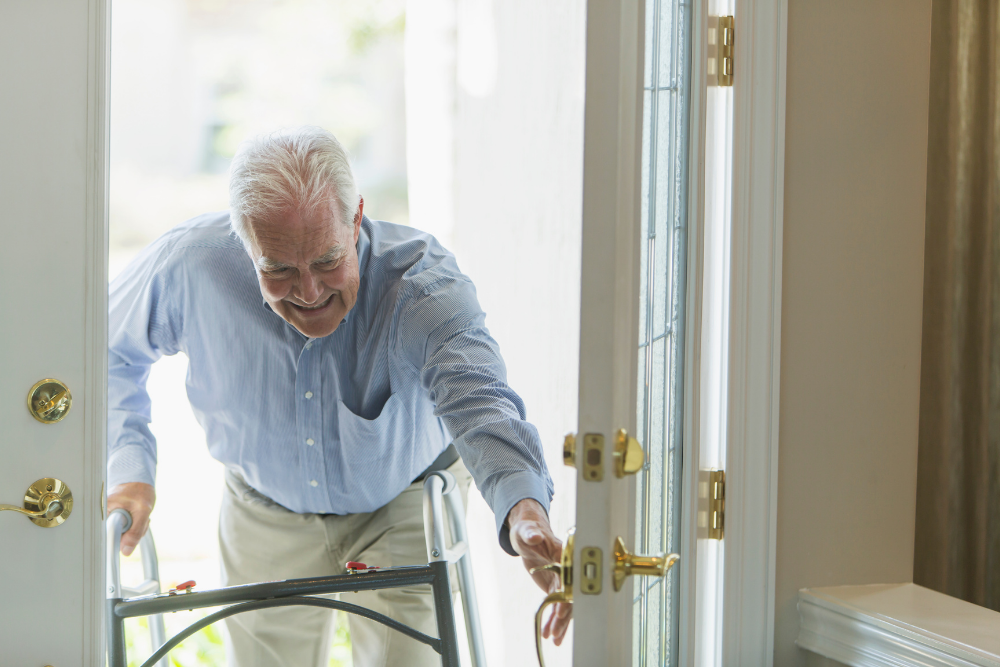
Aging in place design focuses on incorporating safety features and products to help people stay in their homes.
Accessible design elements:
- ramp or a no-step entry through the front door (for wheelchair access or increased convenience)
- handrails and grab bars throughout the house (particularly in showers and hallways)
Interior design solutions may also include modifications like:
- fixing placement issues of light switches in the kitchen and master bedroom
- adding new faucets that are easier to turn
- reorganizing furniture to improve access and reduce clutter
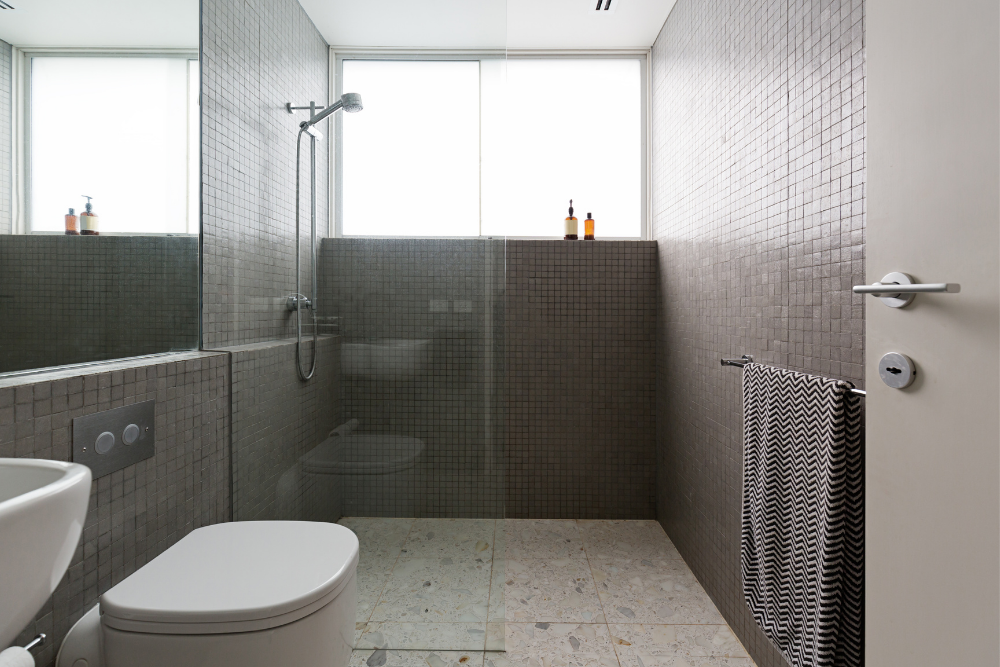
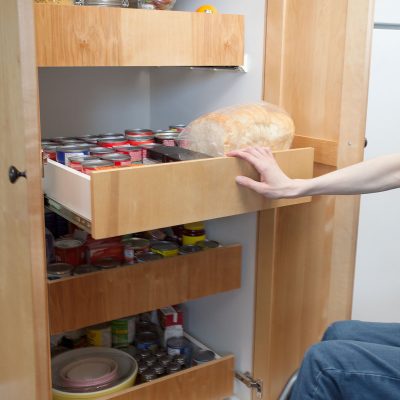
Kitchen modifications could include:
- Larger cabinet pulls
- Pull-out shelves
- Lower countertops for wheelchair access
- Moved sink faucets for easier access
- Front controls for stove or oven
- Multi-level kitchen counter tops with open space under (so the cook can work while seated)
- Refrigerators with two doors for easy access to frozen food storage
Master bath modifications could include:
- Grab bars and transfer benches in bathtubs
Converting a tub to a curbless shower for wheelchair access
Temperature-balanced valves
Installation of pocket doors
Taller toilets
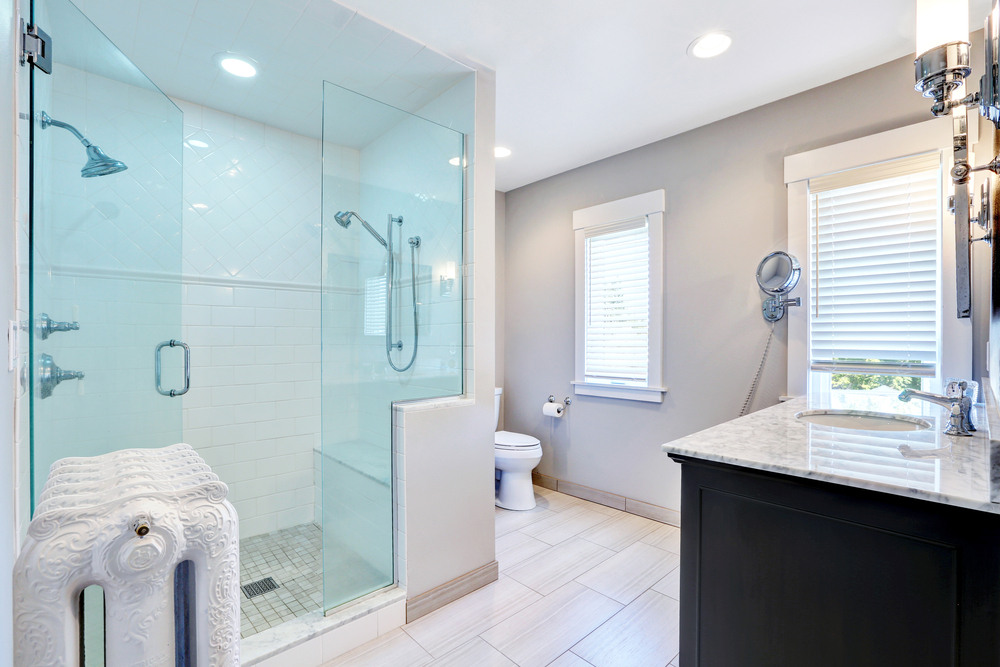
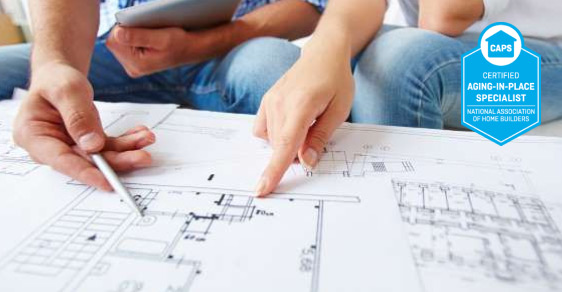
Whole home modifications could include:
- Raised washer and dryer
- Installation of sliding doors
- Lever door knobs
- Planning for elevator installation
- Adding walls for a stair lift
Deep Look: Lighting and Technology in Aging in Place & Independent Living
One of the biggest issues in the homes of seniors is lack of proper lighting.
Dark hallways, poor outside lighting, and an overall lack of natural light can create trip hazards throughout the home. Additionally, dim lighting in closets, around the shower area, and by the stairway can also be dangerous.
Because of this, improving lighting is always important for aging in place design.
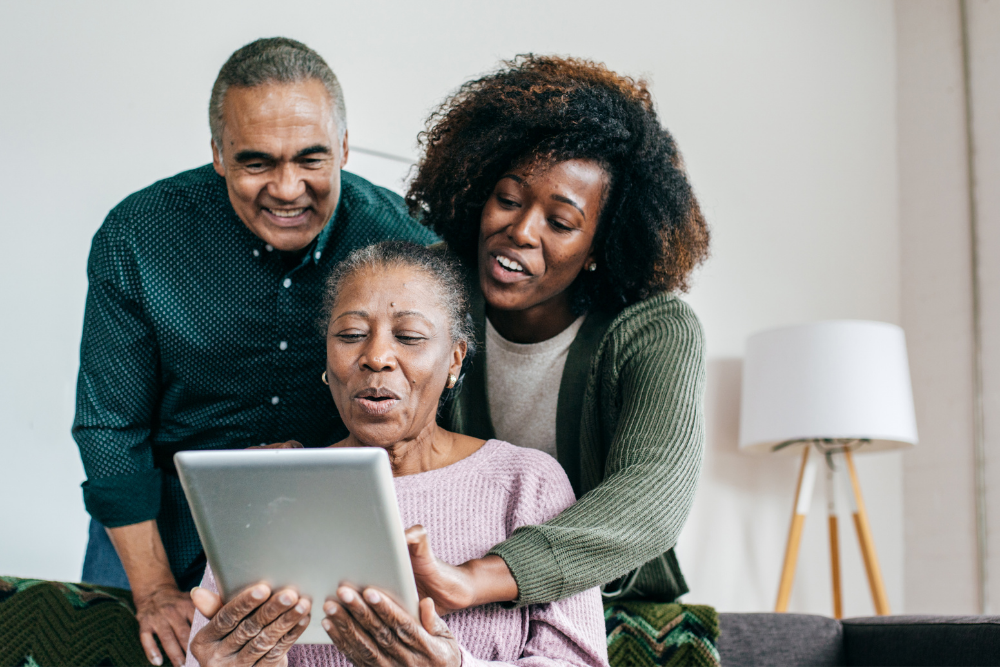
Lighting design solutions can include:
- installing indirect lighting to reduce glares and shadows,
- adding motion-activated lights inside or outside
- ensuring all light switches have easy access to find and reach, even in a wheelchair.
- using full-spectrum lighting to improve mood
Along with lighting, another primary area to focus on is technology. Today’s smart technology makes tasks like turning on lights and adjusting the thermostat easier than ever.
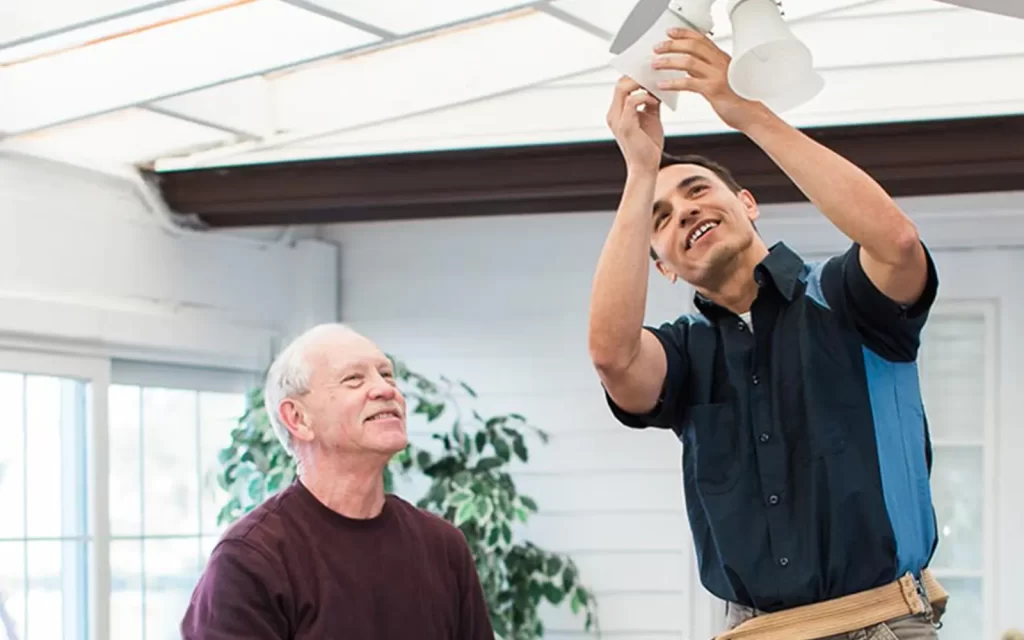
Yes, there is often a learning curve for seniors. However, new technology is user friendly and can help people of all ages live more comfortably in their home.
One of the most important aspects is that homeowners can control parts of their house without having to move around. Often, it’s as easy as making a few clicks on their smartphone — or even just saying a few words.
Planning for Your Quality of Your Later Years at Home
Your comfort at home matters. A good designer will plan for your comfort by identifying the wellness factors that affect your health. Some can even help coordinate the personal care and community resources you need to have a better quality of life at home.
Together, you’ll outline and create a customized plan for your aging in place design. This will ensure you have a more complete solution for your immediate and long-term needs.
Have you experienced a life-changing event? Are you aware of changes occurring? Do you simply foresee issues in the near future?
If any of these sound like you, it’s time to start a conversation with partners, family, and loved ones. Don’t wait for a crisis to make plans for the future.
Why Choose Live in Place Designs for Your Home Modifications?
At Live in Place Designs, we understand that home modifications are a big decision, and we’re here to guide you through the process from start to finish. Our team of certified aging in place specialists has over 20 years of experience designing and building custom home modifications for seniors and individuals with disabilities.
When you choose Live in Place Designs for your home modifications, you can expect:
- A comprehensive needs assessment to determine the right modifications for your unique needs
- Customized design solutions that are tailored to your individual needs and preferences
- We’re CAPS certified by the National Association of Home Builders (NAHB).
- Access to a wide range of assistive technologies and universal design features
- Skilled and experienced contractors who will complete your modifications with the highest level of craftsmanship and attention to detail
- Ongoing support and guidance to ensure your modifications continue to meet your evolving needs
If you’re interested in learning more about how home modifications for independent living can benefit you or a loved one, contact us today to schedule a consultation. Let us help you enjoy the comfort and familiarity of your own home for years to come.

